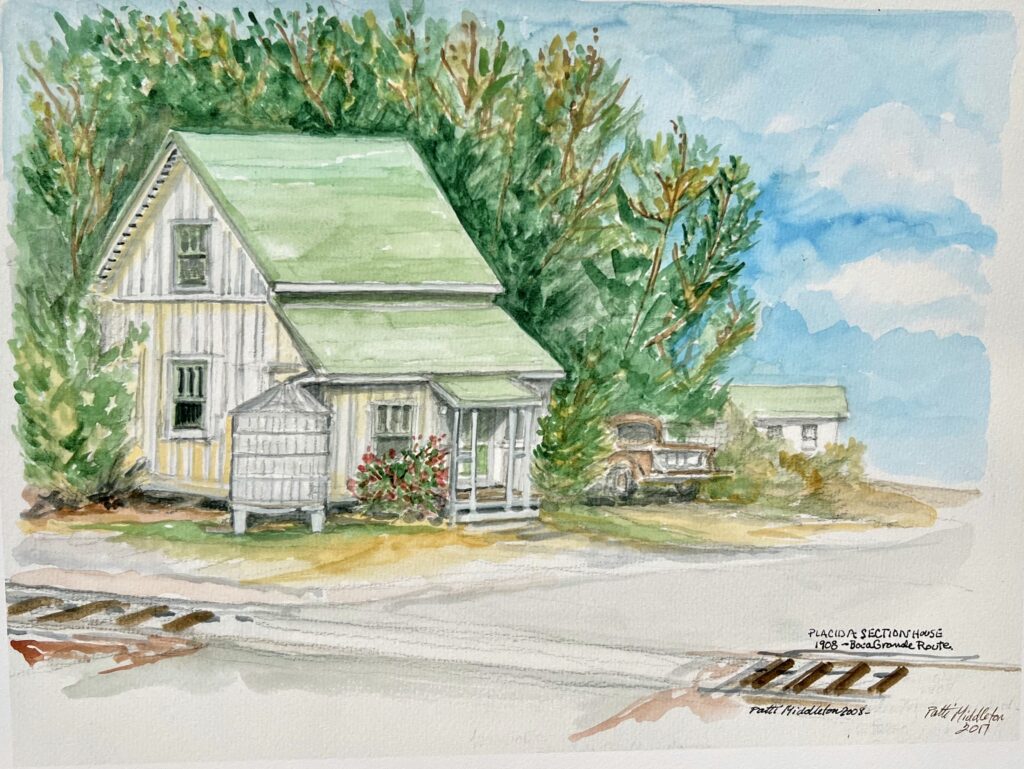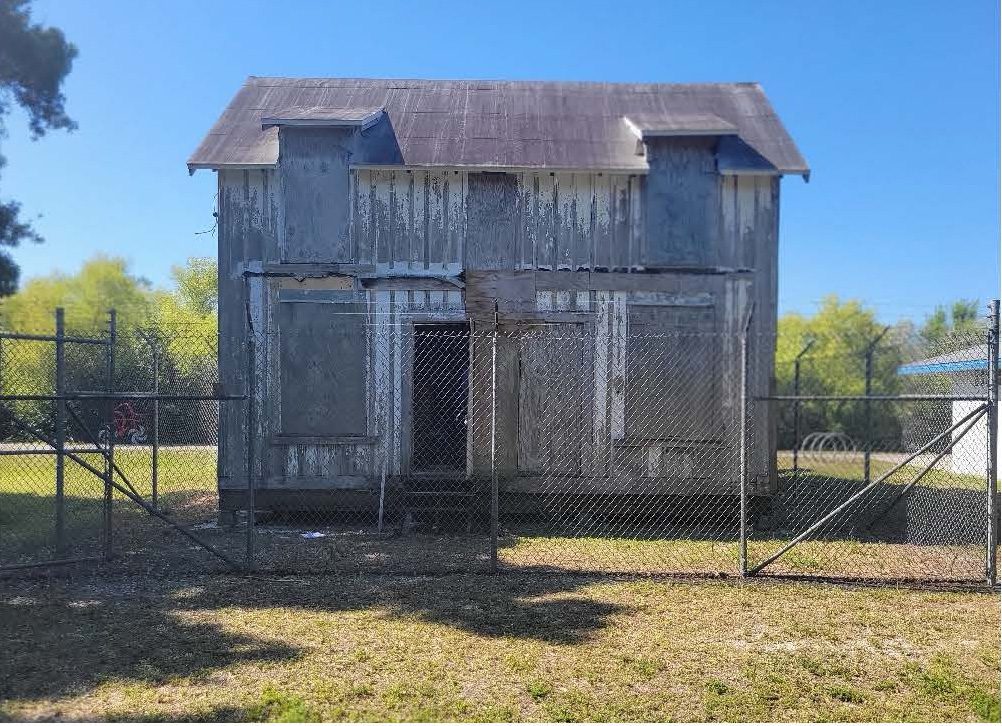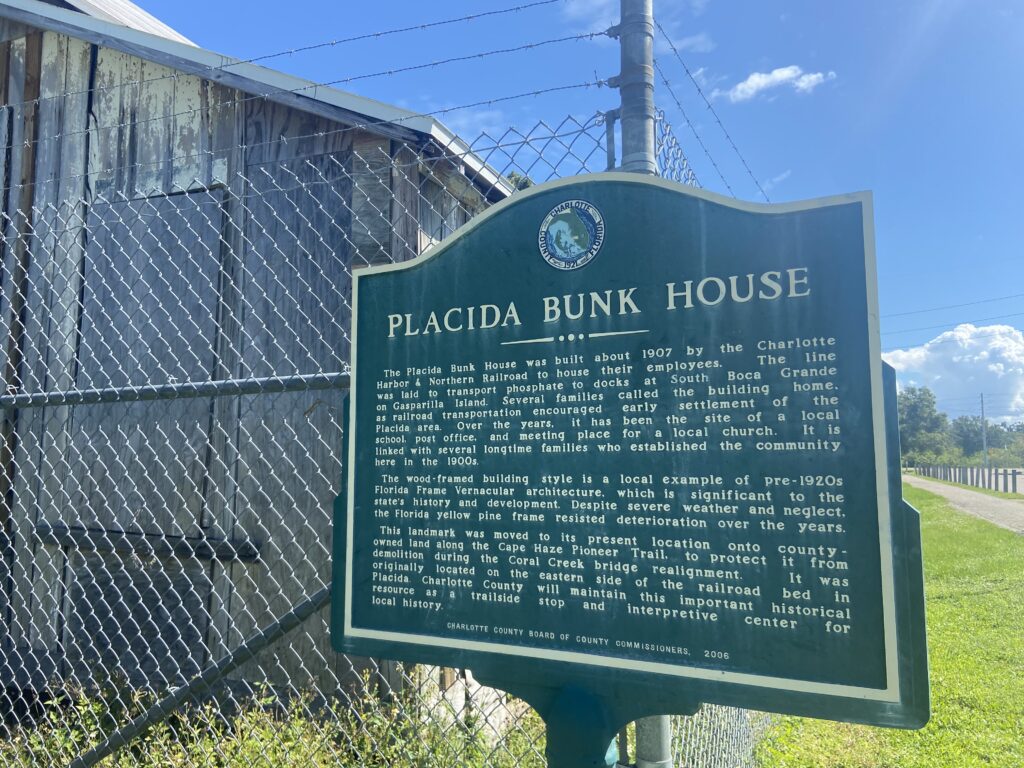Charlotte County’s 1907 Placida Bunkhouse is cornerstone of local history

Editor’s Note: The Charlotte County Board of Commissioners will hear recommendations for the future of the Placida Bunkhouse on Tuesday, Feb. 25 at 9 a.m. Below is an update from John Valickas, a Placida resident who has been working to keep the issue in front of the public until it can be repaired.
BY JOHN VALICKAS
Historic buildings serve as tangible links to our past, preserving the stories and cultural heritage of the communities that built them. They offer a sense of identity, continuity, and connection to earlier generations, reminding us of the struggles and triumphs that shaped our present. One such structure of immense historic significance is the Placida Bunkhouse, built around 1907 in Charlotte County, Florida. This building is not just an old structure; it is a living testament to the region’s development, having served as housing for railroad workers, a post office, a church, and a home for multiple generations of families. Preserving and restoring the Placida Bunkhouse is not just a matter of historical interest. It is Charlotte County’s responsibility to honor its past and ensure that future generations can learn from it.
The Placida Bunkhouse played a crucial role in the early 20th century as the railroad expanded into southwest Florida. Railroad workers, who were instrumental in shaping the region’s infrastructure, lived in the bunkhouse as they built the lines that connected Placida to the rest of the state. The building later evolved to serve multiple community needs, operating as a post office, a church, and eventually becoming a home for families who contributed to the area’s growth. This multifunctional role makes the bunkhouse more than just an artifact; it is a cornerstone of Placida’s history.
Beyond its historical importance, the bunkhouse is architecturally significant as an example of Florida Vernacular design. This style emerged as a response to Florida’s hot and humid climate, with features such as elevated construction to prevent flooding, wide eaves and porches for shade, and cross-ventilation to cool interiors. The Placida Bunkhouse reflects these principles, showcasing a style that is not only functional but also deeply tied to the cultural and environmental landscape of early Florida settlements. Preserving this structure means maintaining a piece of architectural history that tells the story of how people adapted to and thrived in the region.
Despite its significance, the bunkhouse is currently at risk of being forgotten or lost. Charlotte County has an obligation to restore this structure, not only to preserve the physical building but to honor the rich history it represents. Restoration would not only maintain the integrity of the county’s heritage but also serve as an educational and cultural resource for residents and visitors alike. Historic preservation has been shown to boost local economies through heritage tourism, foster community pride, and create a deeper appreciation for the region’s past.
A project of this magnitude requires both financial investment and community involvement. The restoration and relocation of the Placida Bunkhouse could be achieved through a combination of public and private funding, ensuring that the effort is both feasible and sustainable. Public funding from Charlotte County, state preservation grants, and federal historic preservation programs could provide a foundation for the project. Meanwhile, private contributions from local businesses, historical societies, and individual donors who value the region’s history could help bridge the financial gap. Community fundraising events, corporate sponsorships, and partnerships with preservation organizations could further strengthen the effort. By combining public resources with private support, the project could be successfully realized without placing an undue burden on taxpayers while fostering a sense of shared investment in Placida’s history.
However, restoring the bunkhouse is only part of the solution. The building must be returned to its rightful place in Placida. Historical buildings derive much of their significance from their original locations, where they remain connected to the stories and landscapes that define them. Moving the Placida Bunkhouse back to its home would reinforce its historical context and allow it to be properly recognized as a landmark of the community. Charlotte County should take the necessary steps to facilitate this move, ensuring that the building is not only preserved but also given the recognition it deserves in its historical setting.
The building currently sits at the top of the Charlotte County Pioneer Trail in Gulf Cove, where it has been for almost 20 years since it was moved to make way for the realignment of the Coral Creek Bridge. It is nine miles from its original location. Bees and iguanas now make the structure their home.
Saving the Placida Bunkhouse is about more than just protecting an old building. It is about preserving the identity, architecture, and history of Charlotte County itself. By restoring and relocating the bunkhouse through a combination of public and private funding, the county can demonstrate a commitment to honoring its past while enriching the present and future for generations to come.
Find out more:
- The staff presentation PowerPoint is HERE.
- Past headlines on the Placida Bunkhouse are HERE.
- Meeting agenda is HERE.
Below, some images from the current situation, as well as a Patti Middleton drawing.














